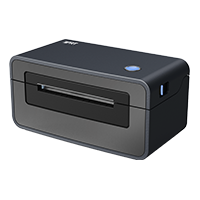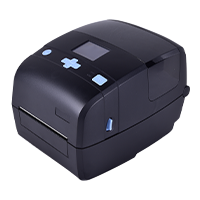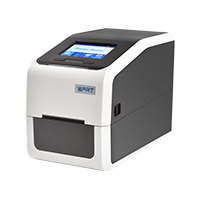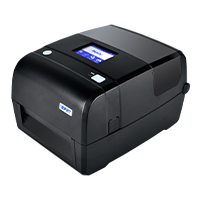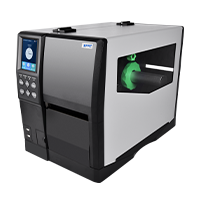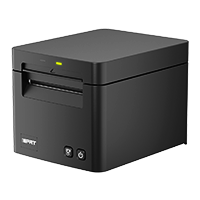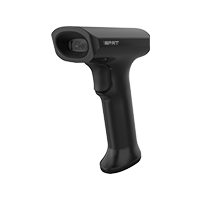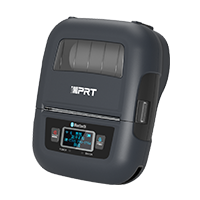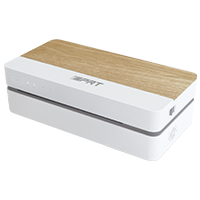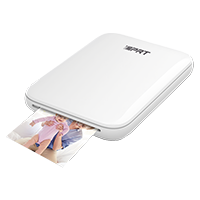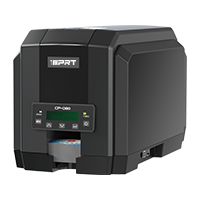A Comprehensive Guide to RFID Tag Types in RFID Printers
2023-10-09 19:02
In today’s tech-savvy era, RFID (Radio-Frequency Identification) technology is undoubtedly a hot topic. From simple access cards to intricate logistics tracking systems, RFID technology has permeated our lives. However, for businesses, understanding the types of RFID tags needed is crucial before purchasing an RFID label printer.
Should you opt for active or passive RFID tags? Or should you choose low-frequency, high-frequency, or ultra-high-frequency RFID tags? This article provides a detailed overview of various RFID tag classifications to guide you in selecting the appropriate RFID label printer.
1.What Are RFID Tags?
RFID, short for Radio-Frequency Identification, is a cutting-edge wireless communication technology designed to read and capture data stored on RFID tags through radio waves.
For example, consider the ETC fast lanes on highways. As you drive through, an RFID tag reader at the toll booth scans the RFID tag on your vehicle, facilitating a seamless toll payment process. These RFID tags are versatile, small devices that can be affixed to a multitude of objects for the primary purpose of data storage. Comprising an antenna and a microchip, they interact with RFID readers through radio waves.
These tags come in a variety of forms, including RFID labels, stickers, and cards. They can even be embedded into objects. Your company’s ID badge, for instance, might feature an RFID label, enabling it to interact with access control systems and ensuring that only authorized personnel gain entry to restricted areas.
2.Choosing Between Active and Passive RFID Tags: What You Need to Know
RFID tags can be classified based on their power source into three main categories: Active RFID tags, Passive RFID tags, and Semi-passive tags.
Active RFID tags, also referred to as powered RFID tags, are equipped with an internal power source. This allows them to actively transmit signals, offering an extended reading range. These tags are particularly beneficial for applications that require long-distance reading or real-time data transmission, such as vehicle tracking or large-scale asset management.
On the other hand, Passive RFID tags, commonly known as passive RFID labels, operate without an internal power source. They depend on the reader’s signal for activation and data transmission, which results in a shorter reading range. Their low cost, compact size, and maintenance-free design make them a popular choice for sectors like retail, logistics, and access control systems.
Semi-passive RFID tags serve as a middle ground between active and passive tags. While they do have an internal power source, it’s solely used for the internal circuitry and not for signal transmission. Similar to passive RFID labels, these semi-passive tags rely on the reader’s radio waves for data transmission. However, their internal power source enables them to store additional data or execute more complex functions, such as environmental monitoring for temperature.
By understanding these key distinctions, you can make an informed decision when selecting RFID tags for your specific needs.
3.Low-Frequency, High-Frequency, and Ultra-High-Frequency RFID Tags
The frequency of RFID tags is a pivotal factor in both system design and practical applications. Here, we delve into the three main categories: Low-Frequency (LF) RFID Tags, High-Frequency (HF) RFID Tags, and Ultra-High-Frequency (UHF) RFID Tags.
● Low-Frequency (LF) RFID Tags
Low-Frequency RFID tags, operating within the 125kHz to 134kHz frequency range, are predominantly passive RFID labels. These tags find common usage in pet identification, automatic vehicle toll collection, and access control systems. Due to their shorter reading range, LF RFID tags are ideal for applications requiring close-range identification.
● High-Frequency (HF) RFID Tags
High-Frequency RFID tags function at a 13.56MHz frequency and are primarily designed as passive RFID tags. These tags are often available in various forms such as bookmarks, cards, or stickers. They are particularly well-suited for applications requiring close-range reading and enhanced security features.
Common use-cases include library book management, hospital patient tracking, electronic ticketing, and short-distance payments like card payments for public transport and subways.
● Ultra-High-Frequency (UHF) RFID Tags
Ultra-high-frequency RFID tags operate within the 860MHz to 960MHz frequency range and come in both passive and active designs. Their notable features include a longer reading range and faster data transmission capabilities.
For instance, in large warehouse environments, UHF RFID tags generated by RFID label printers can quickly scan and identify a large number of items, significantly improving work efficiency.

UHF RFID tags come in various forms, such as clothing RFID tags, anti-counterfeit labels on products, and medical equipment labels, even tracking stickers on logistics packages.
In industrial RFID printer applications, the use of UHF RFID tags is particularly common. Due to the advantages of long-distance reading, high-speed data transmission, and excellent anti-interference capabilities, UHF RFID technology is widely applied in various industries like manufacturing, logistics, retail, and healthcare.
For example, large clothing retailers like Zara and Uniqlo use RFID tags to track their merchandise inventory, ensuring timely replenishment on the shelves and improving inventory management efficiency. Medical institutions like the Mayo Clinic utilize RFID labels to track surgical tools and medical equipment, ensuring each tool is in its correct place, thereby ensuring patient safety and efficient surgical procedures.

The iDPRT iX4R RFID Label Printer is specifically designed for ultra-high-frequency passive RFID labels. It is used for component tracking in manufacturing, drug and equipment management in healthcare, and inventory management in warehousing. It can also be used in anti-counterfeiting, transportation, food, clothing, books, and various other fields.

Key Features:
High Performance: Precise antenna positioning allows for the reading and printing of RFID labels ranging from 25-120mm in width. It can quickly and accurately print and encode RFID labels, ensuring each tag can be read accurately.
Strong Compatibility: Supports continuous paper, gap label, black label paper, and UHF RFID tags, making it versatile across various applications.
User-Centric Design: Equipped with a 3.5-inch color LCD touchscreen, its interface is straightforward, making it easy for even beginners to master. Unique USB HOST functionality supports offline operations, providing additional convenience for users.
Comprehensive Interface Options: Comes standard with USB, Ethernet port, and serial port, with optional parallel port or label machine interface, Wi-Fi, and Bluetooth.
Whether in healthcare, retail, or logistics, RFID technology is building a more efficient and intelligent future for us. The iDPRT iX4R RFID Printer offers an excellent printing experience, ensuring each RFID tag performs its role accurately, adding greater value to your business. In this rapidly changing era, move forward with iX4R and explore the endless possibilities of RFID technology.

